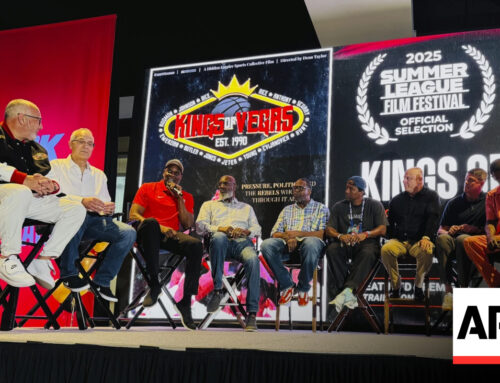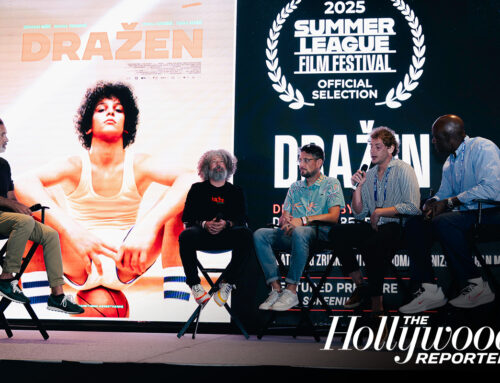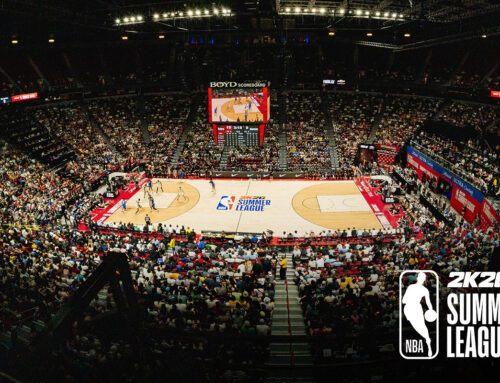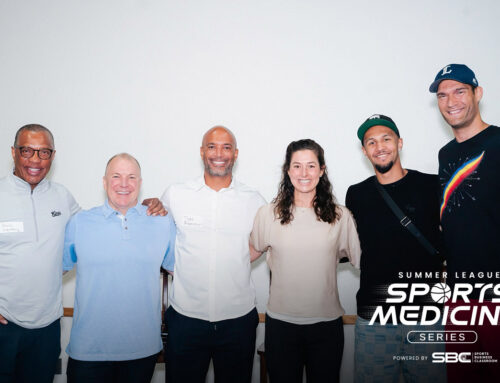via Mike Trudell | @LakersReporter www.nba.com/lakers
Watching a team score 110 to 115 points per game sounds pretty fun, right?
That’s the plan for Mike D’Antoni, the newest coach of the Lakers, so eager to usher in an era of L.A. hoops defined by flow, energy and rhythm. His system will feature free ball movement, a plethora of screen rolls and pops and open shots from all over the court.
Kinda like something Lakers fans have seen before.
“We want to be able to play Showtime type basketball,” D’Antoni said during his introductory presser on Thursday afternoon. “(The 1980’s Lakers) might have done it the best that you can do it. We want to get to someplace close to that and that will be awesome.”
Approaching what Magic Johnson and James Worthy accomplished, or even what Steve Nash and D’Antoni did in Phoenix isn’t meant only in terms of the most important thing – winning – but in style. The Lakers started 2012-13 at 3-5, averaging 96.5 points per game to rank 20th in the NBA, not maximizing the type of talent on the floor even with an injured Nash watching in street clothes. Mike Brown was let go after a 1-4 start, D’Antoni announced as the replacement late Sunday night.
Interim coach Bernie Bickerstaff will again have the reins on Friday night against Phoenix as D’Antoni watches from the locker room, but if you’re wondering how will the system look when he gets to the sideline? That’s simple.
“If you have good players it works,” said D’Antoni. “If you have bad players, it doesn’t work.”
Enter Kobe Bryant, Dwight Howard, Pau Gasol, Metta World Peace and of course, Nash.
That group isn’t going to win sprints against Oklahoma City or Miami, but that doesn’t mean they can’t run. It doesn’t mean they can’t play up-tempo.
Hoops legend and Lakers consultant Bill Bertka explained.
“You can be a push-it, fast-break team even if some of your players aren’t fast,” he noted. “Take a look at those great Celtics teams of the 1960’s, who played that way with only two guys who could run like hell in Sam Jones and Bob Cousy and three who dragged their butts up the floor. It’s about the rhythm and timing of it all, and that can be taught.”
The Showtime Lakers – except Kareem – all ran, and the Suns certainly got up and down faster than these current Lakers will, but that doesn’t necessarily affect the movement within the system.
“I like the offense to flow,” D’Antoni explained. “The ball should find everyone and our best guys. We don’t call plays. I hate when guys say: ‘Hey I didn’t get my touches.’ It doesn’t make sense. Everybody has touches. That ball should go around.”
His floor general won’t see the court for at least one more game as he recovers from a non-displaced fracture in his left leg suffered on Halloween, but who better than Nash to usher in what D’Antoni wants to do? Two MVP awards behind 17.5 points and 11.2 assist and ridiculous shooting numbers came under D’Antoni, who pointed out how much easier winning was with Nash (.733) than without (.385).
“I was talking to Steve,” D’Antoni quipped. “When he feels better, I’ll start to feel better. I don’t want to repeat too many lines, but I tried coaching without him and that didn’t work too well.”
You know … the whole “if you have good players it works” thing, which was tricky in New York when the most important thing was gutting the roster to prepare for the LeBron James free agency class in 2010.
But make no mistake. D’Antoni knows what’s at stake. He knows the window to win is now, that it’s championship or bust, and he thinks his system gives the Lakers the best chance.
Its beauty is in its simplicity. The offense is designed to free up players with great skills to take advantage of defenses as many times as possible in 48 minutes.
Sometimes the best shot will come right away – thus the “Seven Seconds or Less” moniker from D’Antoni’s days in Phoenix. But he doesn’t really care how long it takes to get a shot as long as it’s in the flow of an offense that has no play calls.
“My whole philosophy is 24 seconds or less,” he said. “I don’t care if it’s seven or 10 or 20, we just have to get one good shot in those 24 seconds and that’s what we’ll do. I expect us to be a little more up tempo, not seven seconds. There’s no reason why there’s not a great flow. “Why not play the most possessions you can play if you’re the best defensively and offensively? Any time possessions are cut down, then a bad call, a missed shot then you have a chance to lose. If we keep possessions up, then statistically, we have a lot better chance to win. That’s what we’re going to try and do.”
D’Antoni, still recovering from knee replacement surgery and thus on crutches at practice and his presser, is aided by the fact that the player’s he’s about to teach are thrilled to have him in L.A.
“The fact that I’m genuinely excited about it, Steve is, Dwight is, Pau is, it makes it easier for everyone else to fall in line behind that,” said Bryant, who called D’Antoni an “offensive genius.”
One reason Bryant was convinced D’Antoni would make the necessary tweaks to fit L.A.’s personnel – D’Antoni was responsible for the design of the offense for Team USA in the 2012 Olympics and 2010 World Championships, both resulting in gold medals for the Americans.
When I asked D’Antoni about how he wants to deploy Kobe within his offense, you could see the wheels turning.
“I can’t wait to work with him,” said Kobe’s fellow Italian speaker, noting how efficient Bryant’s been to start the season (56 percent field goals). “We’ll try to open it up a little bit more for him … he has to be in attack mode, he can’t be too overaggressive. I think this offense is built to where it will only enhance what he does. I’m not going to coach him down … the ball should find our best guys.”
Putting players in positions to be successful is as important with Bryant as it is with Bryant’s backup.
Or as Bertka put it, “(Mike) wants players to simply do what they’re best at.” For Jodie Meeks, that means shooting a lot, not putting the ball on the floor going to the hoop.
“The only time (Meeks) needs to shoot is when he touches the ball,” D’Antoni grinned. “That’s what he’s good at.”
“It makes (bench players) more comfortable to have a coach that tells them, if you have open shots, shoot it,” added Bryant. “The most important thing is to have Mike, which he’s done today, tell them that he supports them, wants them to be aggressive and wants them to play well.”
And so the system is designed to highlight individual talent, of which someone like Howard has so much. It’s D’Antoni’s idea to get his new center moving around the half court, not to simply post him up so that defenses can load up in that spot. Thus the pick and rolls, the plethora of screens that Howard will be free to run whenever he wants.
Of course, the three-time Defensive Player of the Year immediately becomes the best player D’Antoni’s ever coached on that end of the floor.
“He might put the ‘D’ back in my name,” D’Antoni joked.
A challenge D’Antoni looks forward to is incorporating Gasol, a player he called the most skilled big that’s “played the game in a lot of years” into a system that’s flourished with smaller power forwards in the past. He acknowledged that it’s going to take some time to iron everything out.
But a coach Bryant called incredibly “feisty” and “competitive” doesn’t believe that to be a problem. He said it should be “easy” for him to find ways to get these players buckets, such is the level of talent.
With his first game on the sideline most likely coming on Sunday against Houston, D’Antoni just can’t wait to get started.
“It’s an unbelievable feeling of, ‘I got a real shot,'” he concluded. “To be able to coach this type of team in this city, this weather, are you kidding me? What’s not to like?”







